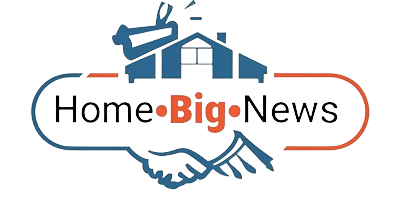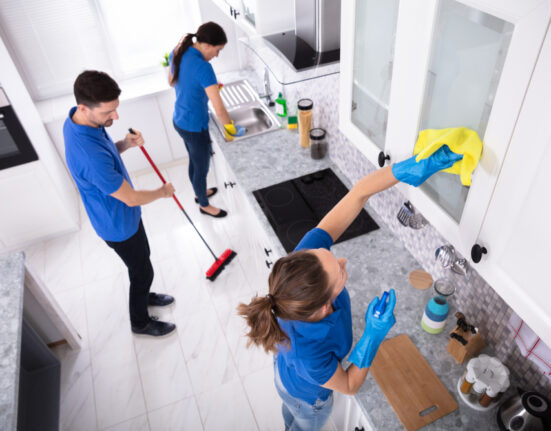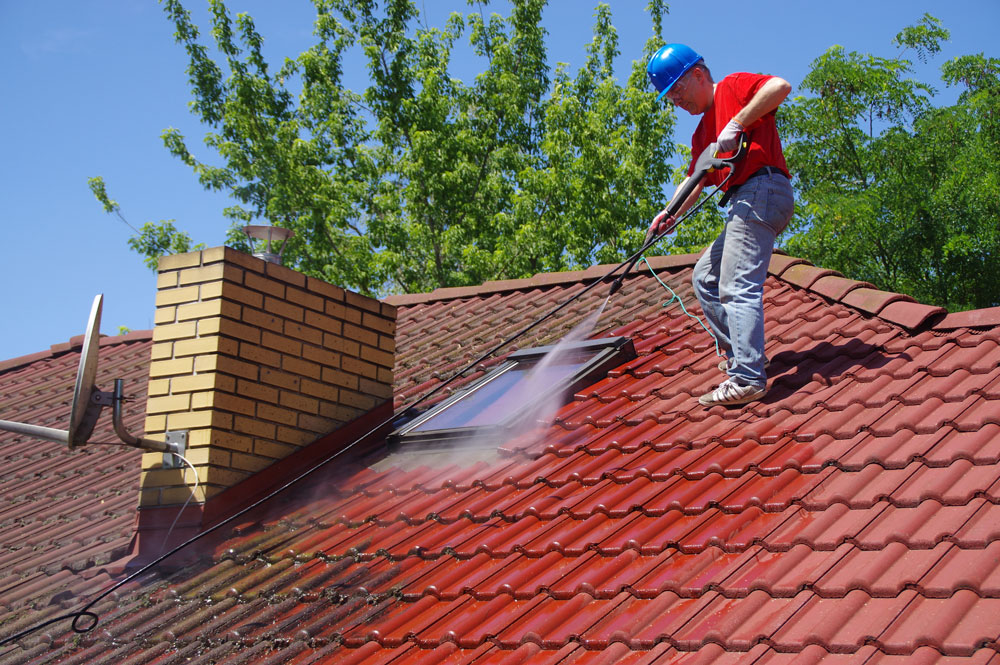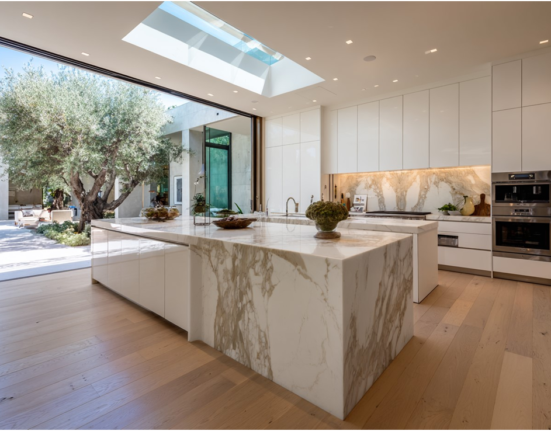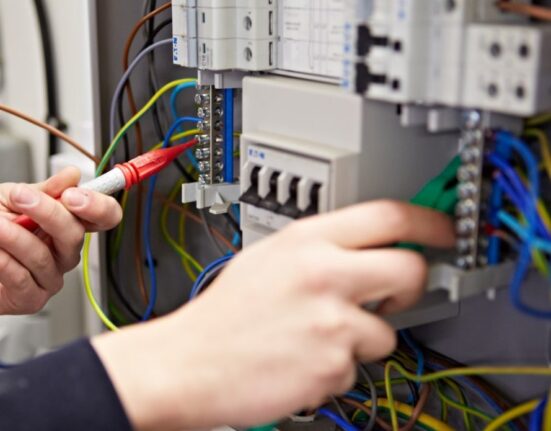Introduction: Imagine you’re finally putting your house on the market. You’ve spent weeks decluttering, repainting the walls, and adding new landscaping touches to boost curb appeal. However, on the day of your open house, a potential buyer comments on the dark streaks covering your roof. It’s something you’ve noticed but brushed off as natural aging. Yet, that buyer’s comment plants a seed of doubt. Could those stains be more than just an eyesore? Could they signal potential damage that might drive down the value of your home?
This scenario is more common than you might think. Dirty roofs don’t just make houses look unkempt; if left untreated, they can shorten the roof’s lifespan and even cause structural issues. In this article, we’ll explore the importance of roof cleaning, standard professional methods, and the surprising statistics that illustrate how this often-overlooked maintenance task can impact your home’s value and longevity.
Why Roof Cleaning Matters
Roofs are constantly exposed to the elements, from scorching sun and heavy rains to snow, wind, and debris from surrounding trees. Over time, this exposure can accumulate dirt, algae, moss, lichen, and other organic materials. Many homeowners overlook roof cleaning, considering it purely an aesthetic issue. However, neglecting roof maintenance can have far-reaching consequences:
- Preventing Structural Damage: Moss and algae can trap moisture on the roof’s surface, which can seep into the materials over time, leading to rot and weakening the roof structure.
- Maintaining Energy Efficiency: Dark stains and debris can cause the roof to absorb more heat, increasing cooling costs.
- Boosting Property Value: A clean roof improves curb appeal, significantly impacting a home’s resale value.
Roof Cleaning Statistics That Might Surprise You
To understand just how impactful roof cleaning can be, let’s take a look at some compelling statistics:
- Property Value Increase: According to a 2021 study by the National Association of Realtors, improving a home’s curb appeal, including a clean roof, can increase property value by up to 7-10%.
- Homeowners’ Neglect: A survey by Angi (formerly Angie’s List) found that nearly 30% of homeowners admit to neglecting roof cleaning until they notice visible issues like moss or dark stains. By this time, repairs often become more costly.
- Extended Roof Life: The Roof Cleaning Institute of America estimates that regular roof cleaning can extend a roof’s lifespan by 5-10 years, depending on the material and environmental conditions.
These statistics illustrate the importance of staying on top of roof cleaning and the potential financial and structural impact of neglecting it.
Common Causes of Roof Stains and Debris
Understanding the types of dirt and stains that accumulate on roofs can help homeowners take preventative measures:
- Algae and Lichen Growth
- Algae, especially the kind known as Gloeocapsa magma, is a common culprit behind those black streaks you often see on roofs. According to Roofing Contractor Magazine, this algae thrives in humid environments and can spread quickly across shingles, particularly on north-facing slopes or shaded areas.
- Moss
- Moss growth is widespread in damp climates and can often be found in shaded roof areas. Moss absorbs water; over time, it can lift shingles, allowing water to seep underneath and cause damage to the roof structure.
- Debris from Trees
- Leaves, branches, and pine needles can pile up on roofs, especially in the fall. This debris holds moisture and can contribute to algae and moss growth. Additionally, it can clog gutters, leading to poor drainage and water buildup.
Roof Cleaning Methods
There are several methods for cleaning roofs, each with pros and cons. Here’s a look at the most popular options:
- Soft Washing
- Soft washing is a low-pressure cleaning method that uses a mix of water and gentle cleaning solutions to remove stains and algae. Professionals often recommend this method, especially for asphalt shingle roofs, as it minimizes the risk of damaging the roof surface. According to Clean Pro Gutter Cleaning, soft washing effectively removes 95% of organic growth, including algae, moss, and lichen, while preserving roof integrity.
- Pressure Washing
- While some people opt for pressure washing due to its immediate, visible results, it can be risky. Pressure washing can damage shingles, especially if not done carefully. Roofers Coffee Shop advises against using high-pressure methods on shingle roofs, as it can erode the granules that protect the shingles from UV damage, shortening the roof’s lifespan.
- Chemical Treatments
- Many roof cleaning companies use specialized chemical treatments to kill algae and moss without harming the roof. These treatments often include eco-friendly options, but ensuring they’re safe for the surrounding landscape is essential. The Environmental Protection Agency (EPA) advises homeowners to check with roof cleaning professionals about environmentally friendly products to prevent chemical runoff into the soil.
- Manual Removal
- Some homeowners or professionals may remove moss manually using a brush or scraper. While this can be effective, it’s labor-intensive and requires caution to avoid damaging the shingles. According to the National Association of Home Builders, manual removal should only be done when necessary and with the utmost care to prevent scraping off shingle granules.
How Often Should You Clean Your Roof?
The frequency of roof cleaning depends on several factors, including climate, location, and the type of roof. Here are some general guidelines:
- In Humid Climates: Roofs in humid climates are more prone to algae and moss growth, so cleaning every 1-2 years is recommended.
- In Arid Climates: In dryer, less humid climates, roof cleaning every 3-5 years may be sufficient, as algae growth is less common.
- Near Trees: If your home is surrounded by trees, especially ones that drop leaves or needles onto the roof, an annual cleaning is advisable to prevent debris buildup.
DIY Roof Cleaning vs. Hiring a Professional
While some homeowners prefer to tackle roof cleaning themselves, hiring a professional can be safer and more effective. Here’s a comparison:
- DIY Cleaning: Homeowners can use a garden sprayer and mild cleaning solution to remove algae or moss, but they should avoid harsh chemicals or high-pressure washing. DIY cleaning may save money but comes with risks, especially regarding safety and potential roof damage.
- Professional Cleaning: Professional roof cleaners have specialized tools, safety equipment, and expertise. According to HomeAdvisor, professional roof cleaning typically costs between $250 and $600, depending on the size of the roof and the cleaning method. While this may seem like a significant investment, the potential for increased property value and the extended lifespan of the roof make it worthwhile for many homeowners.
Environmental Considerations
In recent years, there has been a growing emphasis on eco-friendly roof cleaning practices. Many traditional roof cleaning chemicals contain harsh substances that can harm plants, soil, and even aquatic ecosystems if they run off into nearby water sources. To address this, some companies are turning to biodegradable cleaning solutions. The Environmental Working Group (EWG) encourages homeowners to ask for environmentally safe products, as these can help reduce the negative impact of roof cleaning on the surrounding ecosystem.
The Cost of Neglecting Roof Cleaning
Ignoring roof cleaning can lead to several costly consequences:
- Increased Energy Bills: Dark algae stains absorb more heat, increasing air conditioning costs during warmer months.
- Shortened Roof Lifespan: As mentioned earlier, roof cleaning can extend a roof’s lifespan by 5-10 years. By contrast, neglecting it can lead to costly repairs or even premature replacement, which can range from $5,000 to $15,000 depending on the size and material of the roof.
- Potential Health Hazards: Mold and algae growth can lead to poor air quality if they infiltrate a home’s ventilation system, which can cause respiratory issues for the occupants.
Conclusion: The Long-Term Value of a Clean Roof
Roof cleaning is a minor maintenance task with substantial rewards. It protects the roof from damage, improves energy efficiency, and boosts curb appeal, which can make a difference when selling a home. Regular cleaning, especially in high-risk areas, can save homeowners thousands in repair and replacement costs. Whether you opt for DIY cleaning or hire a professional, staying proactive with roof maintenance is a sound investment in your home’s longevity and value.
When considering the cost of professional roof cleaning, remember that it’s not just an expense—it’s an investment in preserving one of the most critical structures of your home. So, please don’t put it off the next time you notice dark streaks or moss grow; don’t your roof. Your roof—and your home’s value—will thank you for it.
